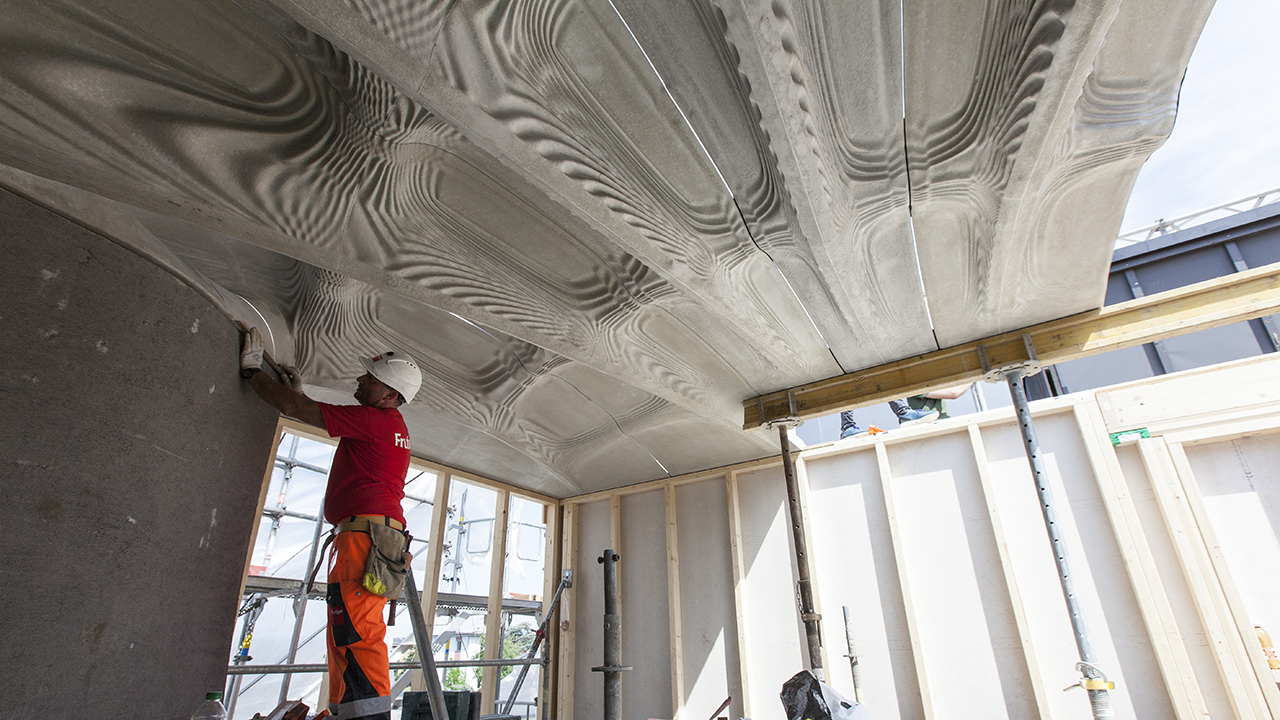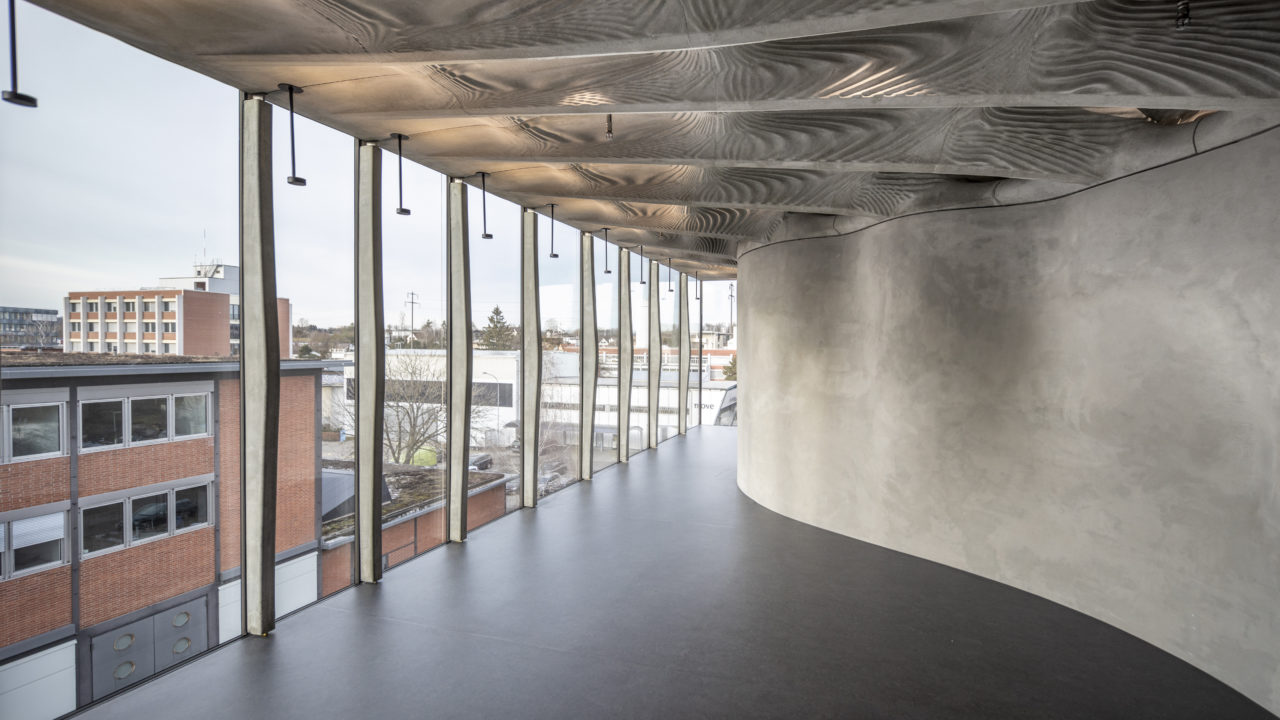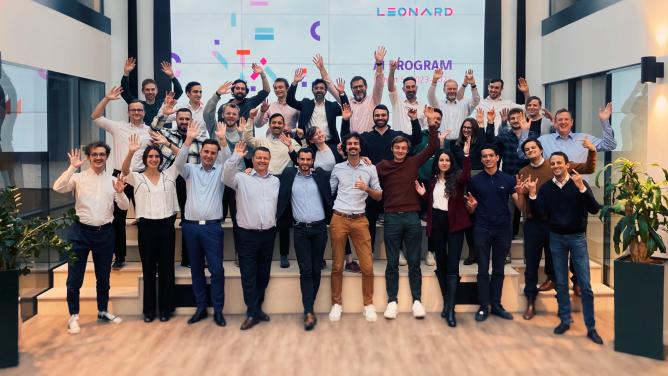How do you define digital fabrication?
In the broadest sense, it’s a process defined by the use of a computer or information technology between completing the design and building a structure. During this process, there is always a point where the objects to be created are represented in the form of data. It’s a generic term that includes robotic fabrication, 3D printing, and processes that are fully automated or involve human-machine cooperation. The concept also includes prefabrication using numerical control machine tools and the use of digital technologies on the construction site.
Do you make a distinction between robotic fabrication and 3D printing?
We can define 3D printing quite simply as the creation of objects from raw materials, energy and information. And 3D printers are robots. That said, robotic fabrication goes further. It encompasses robotic arms capable of shaping material, and cutting systems. It also includes additive manufacturing, which is basically 3D printing in successive layers, but can also involve pre-made objects. This is the case with additive bricklaying, for example.
What is your specific research field in the area of digital fabrication?
My favoured fields are large-scale additive manufacturing and 3D printing. For some years, we have seen a real buzz around these technologies in construction. I think this enthusiasm is justified, because 3D printing allows us to imagine non-standard and customised structures, while simultaneously offering a highly automated manufacturing method.
It’s not a matter of printing entire buildings, but rather of using 3D printing for prefabrication to create customisable components that are geometrically more complex and use less material. Our research is about identifying the correct 3D printing strategy. Questions of scale are key: in most cases, the printer is smaller than the final component, and we have to devise ways to assemble structures from 3D-printed parts. We are also working on the properties of printed materials and on optimising their design earlier in the process.
You notably raised the question of savings on raw materials.
For this first time, 3D printing allows us to decouple from the complexity of the shape and from manufacturing constraints. For some machines, printing a complex object is no different from printing a regular cube. We can therefore devise more intelligent shapes tailored to each application, which are always more elaborate than standard components. Currently, creating a hollow but solid object, inspired by the porous structure of bone for example, is only possible through 3D printing.
How mature is the technology? Is 3D printing becoming ubiquitous?
I’m not sure we need to print everything! In any case, numerous 3D printing methods exist, and they are not all at the same level of maturity. In some architectural fields, the technology is already being used. For creating highly specialised metal joints, for example, or manufacturing the moulds used to make them.
Overall, we are still in the early stages of the digitalisation of construction. But there’s no doubt these methods will play a part in the future, some sooner than others. In the case of 3D-printed extruded concrete, for example, the technology is more or less ready. We now need to create standards and perform the testing needed for large-scale use.

Is the technology financially attractive?
For manufacturing made-to-measure parts, 3D printing is already the lowest-cost solution in most cases. That’s also true for small quantities of items. The appeal of 3D printing is still closely linked to the complexity of the objects. However, one thing is certain: the costs of 3D printing are dropping fast, which makes it attractive for ever greater quantities of items.
What types of printers do you use?
We use existing printer types: binder jet for metal and FDM (fused deposition modelling) for plastic. The latter are easy to set up in parallel, which allows us to create a “printing farm”. We also use robotic printing, for instance with extruded concrete. In that particular case, we developed our own machines.
This new form of construction is transforming jobs and skills…
The skills needed and the tasks to be performed are in the process of changing. Digital fabrication is part of this transformation. In our field, robotics and IT engineers, structural engineers, materials researchers and architects are working together to invent new processes. These new construction methods enable us to combine disciplines that are currently too separated. The artistic and engineering aspects of architecture are coming together organically through the use of digital technologies.
Besides which, the level of automation will continue to increase, in both the design and construction phases. We need to prepare for greater collaboration between humans and machines. In terms of jobs, I am optimistic. For some particularly difficult and onerous jobs, companies struggle to find workers. That kind of task is definitely worth automating. In any event, the most interesting and most creative part of the work is not yet ready to be replaced.
Does automation call creativity into question? Is it an obstacle or a driver?
It all depends on how we use automation technologies. You need only take a critical look at the built environment to see there is already a lack of creativity. In that context, a greater degree of automation and digital fabrication should enable us to create more individual and more original buildings. From the architect’s standpoint, digital fabrication also allows us to imagine objects it would have been impossible to make 10 years ago. We are pushing the boundaries of what is possible.
What are the obstacles to developing these technologies?
For 3D printing, one of the major challenges concerns the properties of the materials. It’s currently a question of reaching the same standards that we have in traditional construction. Quantities and printing speeds are also key issues. The potential of digital fabrication can only be achieved when the entire construction process is integrated. We need designers and builders to work together on digital processes and on a shared culture. We must take a holistic approach to construction. Every stakeholder must understand the potential of these technologies and experiment with them to develop their use on a larger scale.
You have partly answered this question, but how do you imagine the future of construction?
I believe construction must address two major issues: affordable housing and environmental challenges. This involves digitalising the entire life cycle of the building. With digital fabrication, architecture is less limited, construction is more productive, use of materials is more economical, etc.
It’s a subject that goes beyond construction alone, it’s an issue for society that will transform the face of our cities. Currently, we spend between 80% and 90% of our lives in buildings, so it’s a major issue.

DFABHOUSE Smart Slab – Andrei Jipa
Can you give us some examples of applications?
One example is the dfab House. It’s a full-scale demonstrator, where many strands of our research converge. The building was constructed entirely by robots and 3D printers. Despite the large number of radical innovations involved in its construction, the first thing that strikes visitors is the atmosphere and the building’s architectural qualities. The questions come afterwards: “But how was that built? How is that possible?”
La Sagrada Familia is another interesting example. It’s a project that started more than a century ago using state-of-the-art technologies. Decades later, it’s still upto-date and using digital fabrication. They now use 3D printing for rapid prototyping of the cathedral’s complex masonry.


